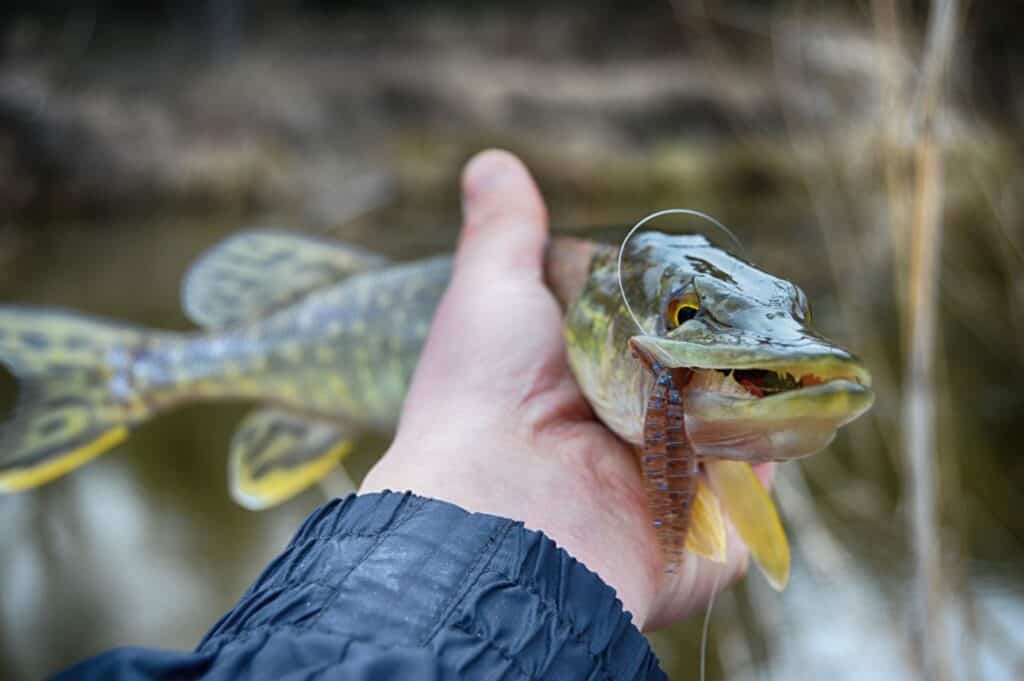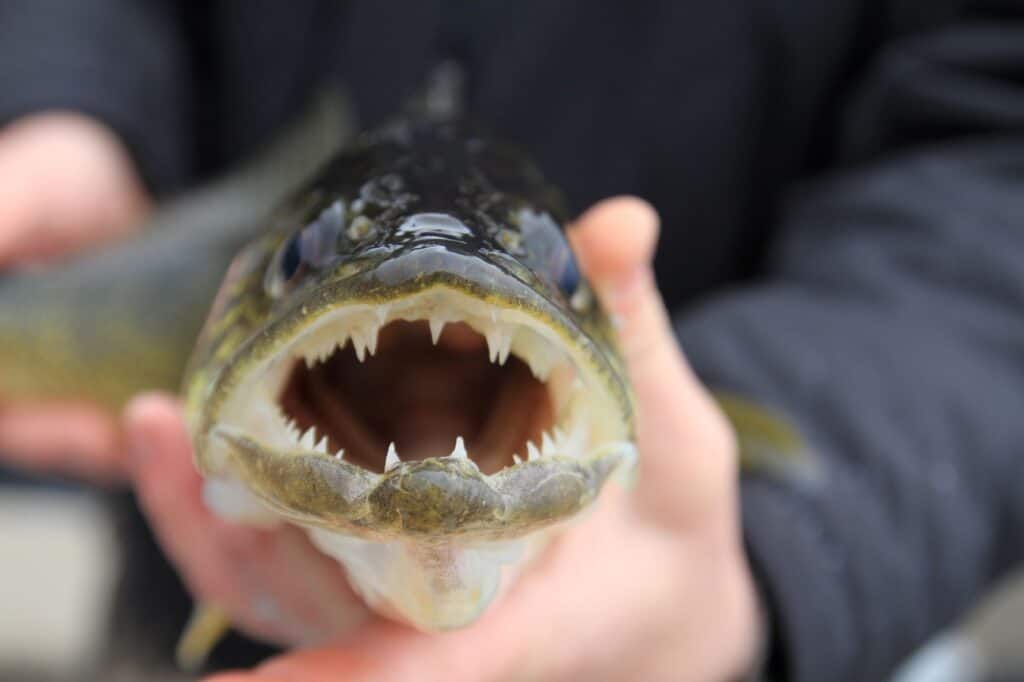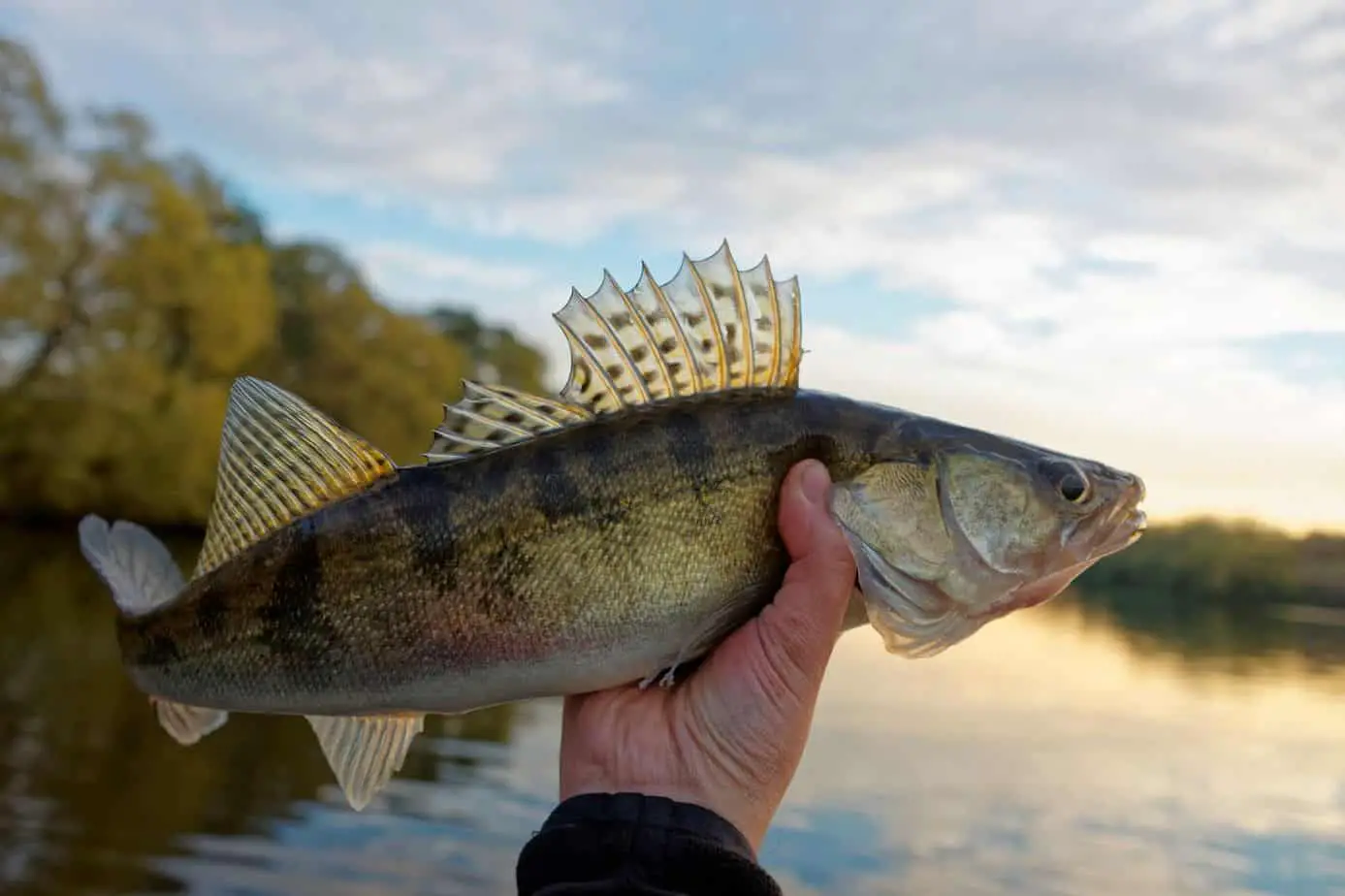There has been much debate and some confusion when considering the difference between walleye and pickerel. Much of this arises from Canada and some parts of the States where Walleye are frequently called Pickerel. This has caused some confusion which we hope to clear up in the course of this article.
So what is the difference between walleye and pickerel?
Walleye and Pickerel are two distinct species that don’t even belong to the same family. Pickerel. As the name suggests, members of the pike family, whereas Walleye, are members of the perch family. Despite this, there is still much confusion when it comes to identifying these species.
There is obviously some clarification required. So here we set out to explore these species in detail, clear up the confusion and leave the angler and the public in general with a clearer idea of just what species of fish they are dealing with.
Main Differences Between Walleye and Pickerel
Despite the confusion that follows these species, telling them apart is actually rather simple. For starters, Walleye grow to be far larger than Pickerel. They can achieve body weights of over three times that of Pickerel. So if you’re holding a fish of 9lbs or above, it is a Walleye. The following table shows some of the main differences.
| Stat | Walleye | Pickerel |
|---|---|---|
| Average Weight | 14lbs | 3lbs |
| IGFA World Record | 25lbs 0oz | 9lbs 6oz |
| Average Length | 33” | 24” |
| Lifespan | 15 to 25 years | 8 years |
In the above table, the Pickerel figures relate to the Chain Pickerel, which is the species most anglers will be acquainted with. However, there are two other subspecies, the Grass Pickerel and the Redfin Pickerel. These are both substantially smaller than the chain Pickerel.
Appearance
When compared, there are a number of defining characteristics that can be used to tell the species apart. Perhaps the most prominent difference is that the Walleye has two dorsal fins, the rear dorsal has soft rays while the front dorsal has spiny rays. By comparison, the Pickerel has only one dorsal fin which is situated close to the tail. Conversely, the Pickerel has two pairs of pectoral fins, whilst the Walleye has one pair.
They also differ in body shape too; Pickerel are slimmer, more torpedo shaped than the Walleye, which is a deeper and rounder shape. The Pickerel also has a long sharp snout, typical of the pike family. Whereas the Walleye has a shorter snout that isn’t as sharp.
They are both similarly colored, but the Chain Pickerel is easily identified by its chain-like markings that gave the fish its name. The Walleye got its name because of its eyes, and this difference can also be used to tell the fish apart. Although walleye have a retinal membrane that makes their eyes glow in the dark, it also gives them great eyesight in low light conditions.
Distribution
Although Walleye are native to the Northern United States and Canada, they have been introduced further south, but in general their distribution is considered to be within the Northern States. By contrast, Chain Pickerel have a wider distribution and range down the East Coast from Canada down to Florida and west into Texas and up as far as the Midwestern States.

Additional Facts about Walleye
As we noted, one fact about Walleye is that in many regions, they are often referred to as Pickerel, which has caused much confusion over the years. This is particularly the case in Canada. But as we have now clarified, this isn’t the case. So in this section, we look at some of the facts about Walleye.
- Diet – Walleye feed mainly on smaller fish but will also feed on worms, crayfish, minnows and insect larvae. Their fantastic eyesight means they tend to feed in low-light conditions.
- Habitat – Walleye are generally found in lakes and pools and in the backwaters of larger rivers. They prefer murky waters and will generally seek shade during the day, either in deep water or in reed beds and vegetation. At night they will feed in shallower water and tend to lurk in patches of vegetation.
- Spawning – Early spring into April is when Walleye spawn dependent on water temperature. Ideally, the water should be between 40 and 55 degrees. A female will lay up to a half-million eggs at a time in shallower water, which the male then fertilizes. The eggs will usually hatch within 10 days.
- Eating – Walleye are much sought after for their flesh, which is renowned for its flavor.
- Best Time to Fish – From late winter to mid-summer is noted as the best time of year to fish for Walleye, either side of the breeding season. Their eyes which are great for low-light conditions, make them sensitive to bright lights, so night fishing and dawn and dusk are the optimum times of day to fish. Equally dull days can be productive.
- Lake Erie – This body of water is known as the Walleye capital of the world. It is said to hold a population of around 40 million Walleye (Down from a high estimate of 80 – 100 million). Lake Erie has more trophy sized fish than any other water.
- Fishing Season – Although it is permissible in many places to fish for Walleye year-round, many waters have local restrictions in place to protect stocks. In addition, there usually are catch limits to adhere to as well.
Additional Facts About Pickerel
Pickerel are members of the Pike family and have the predatory habits associated with the family, so their feeding habits and diet are similar to the Walleye. In this section we look at some other acts about this distinctive fish.
- Habitat – Pickerel tend to hang around the shallower water more often as they don’t share the light sensitivity of the Walleye. They can be found in lakes and rivers but are more prevalent in vegetated areas. In the winter they will tend to move to deeper water.
- Diet – In this way they are very similar to Walleye, they tend to feed on fish but will also take crayfish, frogs and even small mammals that are unlucky enough to find themselves in the water.
- Spawning – Chain Pickerel spawn earlier than many other species, usually at the beginning of spring. The female can lay up to 50,000 eggs which are clumped together in ribbon like masses. These ribbons are sticky to allow them to attach to submerged vegetation or rocks.
- Best Time to Catch Pickerel – Pickerel can be fished for all year round, even ice-fishing in the middle of winter for hardier souls. These don’t have the low-light eyesight capabilities of the Walleye, so fishing during the day is best for Pickerel, although first and last light can be fantastic times to fish for them.

Different Fishing Tips and Techniques for Walleye and Pickerel
One of the great things about fishing for these fish is that you don’t need any fancy equipment to get started. Both these species have similar diets, so the baits and lures you can use are interchangeable. However, if you are fishing in waters where larger Walleye inhabit, you may want to use the heavier gear.
Both these fish have razor-sharp teeth, so a wire trace is essential if you don’t want to lose fish and precious tackle.
Best Time to Fish
Pickerel can be targeted all year round and are at their liveliest in the daytime. On the other hand, walleye fishing isn’t great in the summertime and is best fished in low-light conditions and at night.
Methods and Baits
One increasingly popular method that can be used on both species is fly-fishing. They will even rise to a dry-fly. Larger flies and streamers like minnow imitations are very successful for both species. However, always use a few inches of wire to stop the fish from cutting the nylon with its teeth.
Spinning on light gear is also an excellent method of catching both species. Silver spinners and spoons are generally more fruitful, but many anglers will use crankbaits and plugs as well. When fishing along reed banks and areas of vegetation, it is best to use weedless spoons and lures like the Johnson Silver Minnow Spoon.
For bait, most Walleye anglers recommend Worms, Leeches, Nightcrawlers, and minnows. Most dead baits will work for Walleye, including small chain Pickerel, where live baits can be phenomenal.
For Chain Pickerel, most of the same baits will work just as well. Live baiting usually has better results, but always check local regulations before trying this method.
Conclusion
There is some naming confusion surrounding this fish, and hopefully, this article has set a few things straight. It may come as a shock that all that Pickerel fishing that they have been doing has been for Walleye for many people. However, regardless of what they are called, both these species offer fine sport for the angler, and in the case of the Walleye, some fine eating too!
We hope you enjoyed this article, and there are plenty of other fact-filled and helpful articles throughout the site. If you want to be kept up to date with all our news and be kept informed of all our new content, why not sign up for our newsletter.
If you find this article helpful, don’t leave without sighing up for our newsletter and checking out our Recommended Fly Fishing Gear List.
Don’t forget to check out our other Fish Guide articles.
- Are Bass Good To Eat?
- What’s the Difference Between Trout and Salmon?
- Are Bonefish Good To Eat?
- What’s the Difference Between Carp and Buffalo Fish?
- Are Pike Good To Eat?
- The 7 Best Secret Rainbow Trout Baits
- Best Powerbait For Stocked Trout
- What Is The Difference Between Walleye And Pickerel?
- What Is A Tiger Trout? Where to Find One and How To Catch One

